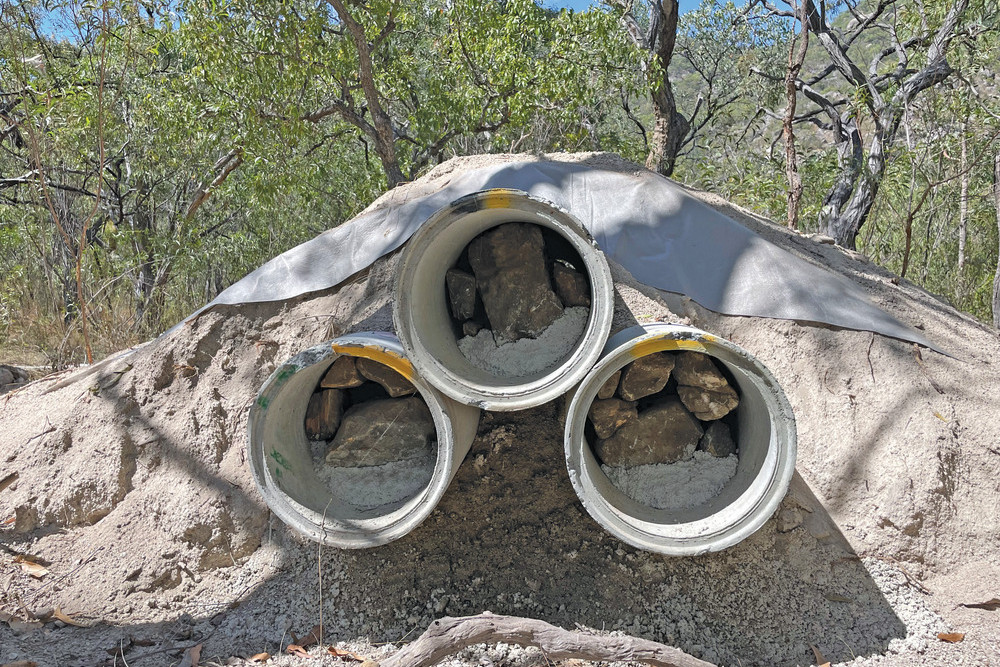On The Land
2 October, 2022
Trial dens built in bid to save quolls
HOMES are being crafted out of concrete and rocks for endangered northern quolls in Far North Queensland to entice them back to what was once “quoll country” in the days before cane toads.

Northern quolls all but disappeared from savannah land after the arrival of cane toads, but re-searchers say the small populations that survived and live in patches of rocky country above savannah land, have learned to avoid eating them.
Now, 12 trial dens are being built around the edges of hillsides at Australian Wildlife Conservancy’s Brooklyn Wildlife Reserve, north of the Atherton Tablelands, to help increase quoll numbers and reconnect populations.
Terrain and Gulf Savannah NRMs and Australian Wildlife Conservancy are working together on the project with the help of Ground Creations, who are building the dens, Transport and Main Roads, and Mt Carbine’s EQ Resources Ltd, who are each providing some of the resources.
Terrain’s Dr Andrew Dennis said 12 trial dens were being built from pipes, rock and rubble.
“Artificial dens have only been used previously on rehabilitating mine sites,” he said.
“With their work to guide us, as well as quoll and den research elsewhere, and all the back-ground survey work done by Australian Wildlife Conservancy on where quolls are living in this area, we’ve come up with a new design that should suit the habitat here.
“Unlike on mining land, these dens will be built within undisturbed areas. Their design is
based on natural den characteristics, such as depth and temperature and humidity targets.
The Department of Transport and Main Roads, in collaboration with principal construction con-tractor HSA Group which is currently working on the Bruce Highway project from Edmonton to Gordonvale, is donating some concrete pipes needed for the project and mining company EQ Resources is providing rocks and rubble.
Dr Dennis said the dens were being built just beyond known quoll habitat. If they are successful in drawing quolls back out into flat savannah land, they may be a useful tool to reconnect isolated populations of quolls and improve the endangered species’ genetic health.
He said quolls had suffered an 80 per cent de-cline in Queensland as cane toad populations in-creased.
“Since then, they seem to have stabilised with populations remaining in pockets where they have learned to avoid toads,” he said.
“If this trial works, the lessons learned could be applied in the Northern Territory and in Western Australia, where there is an ongoing rapid decline.
“Northern quolls are listed in the top 100 priority threatened species in Australia. Females use seven to 10 hectares as a home range, while males need 70 hectares and more.
“We want to get them back on the savannah lands, reconnecting isolated populations and keep-ing genetics healthy while also performing their ecological role there as an apex predators.”


